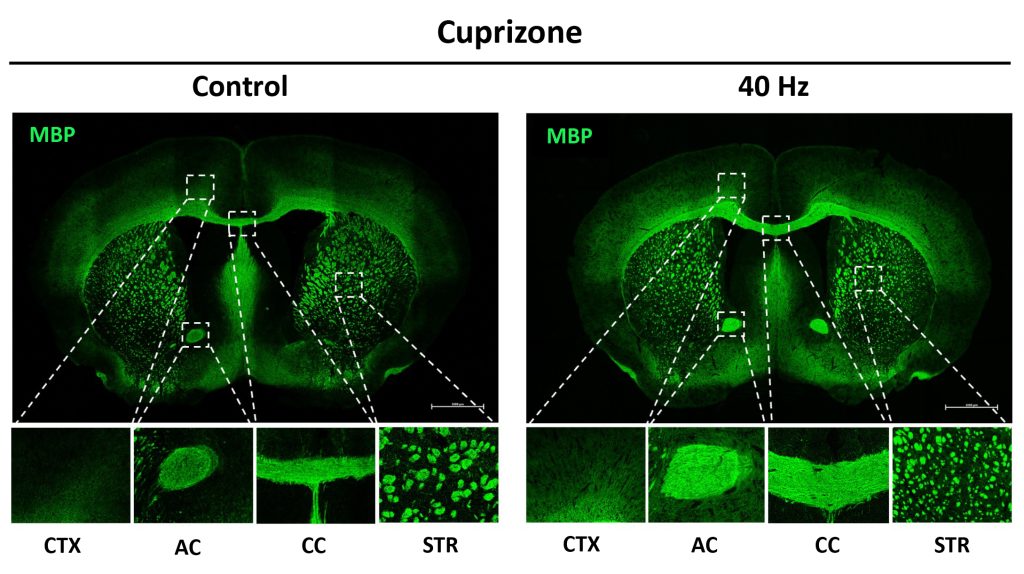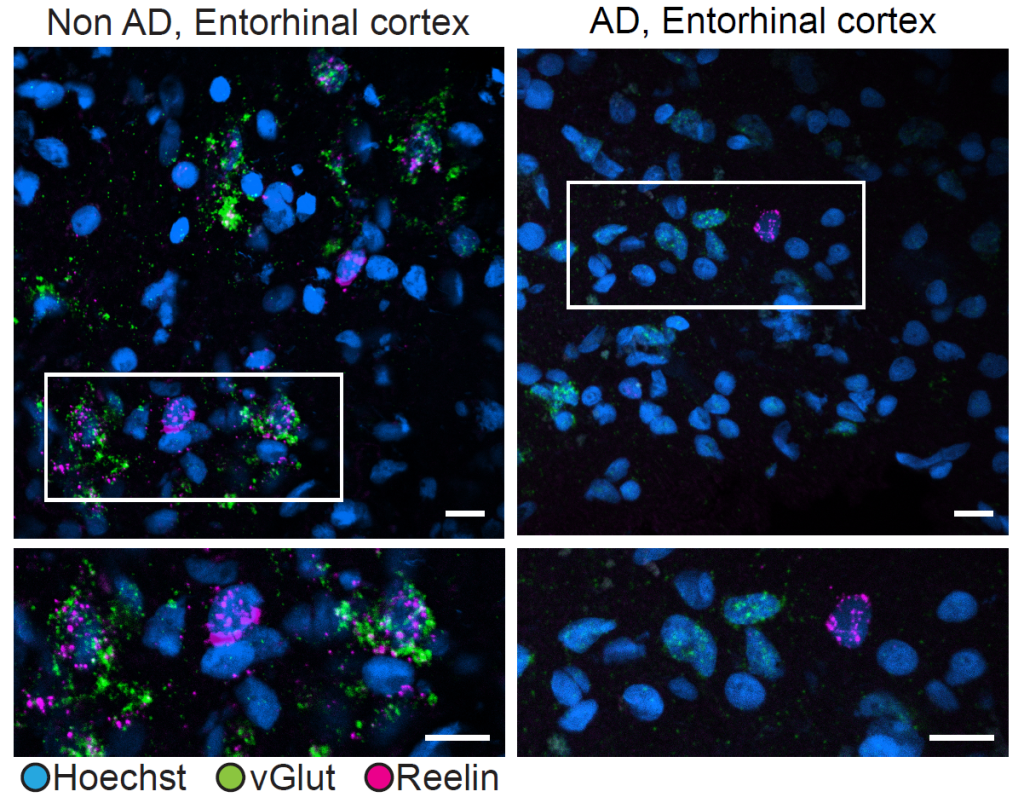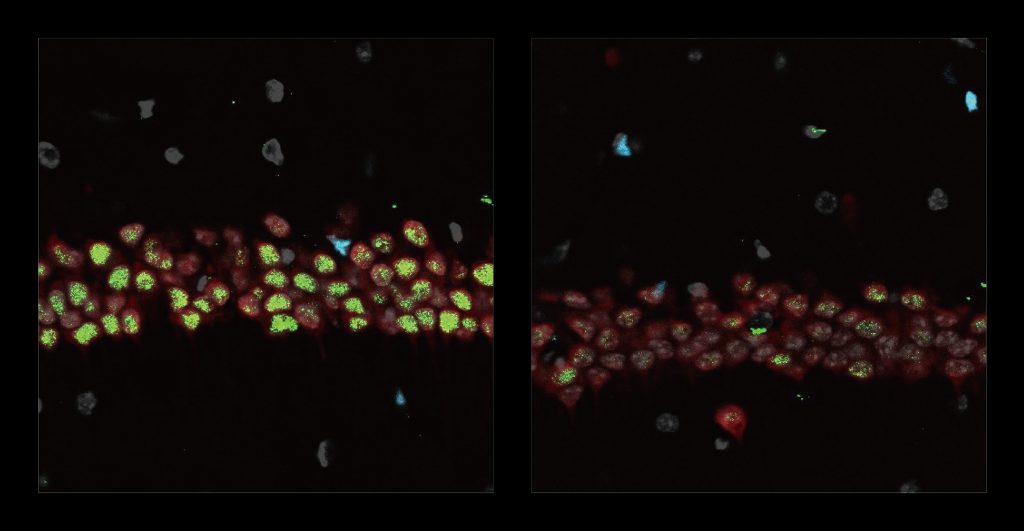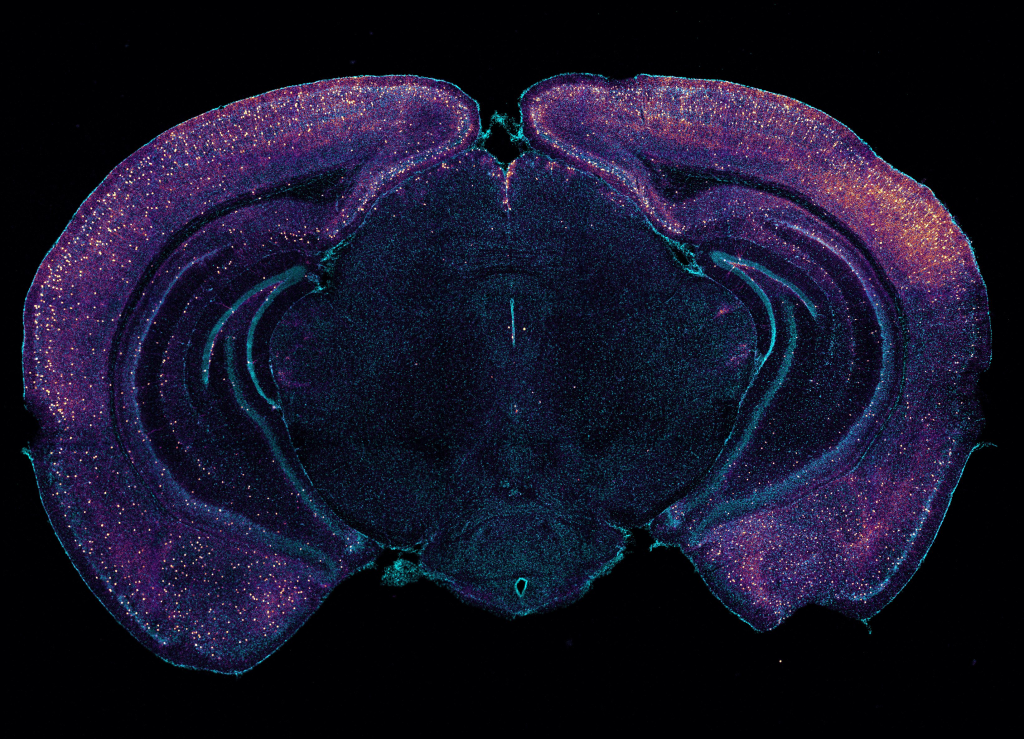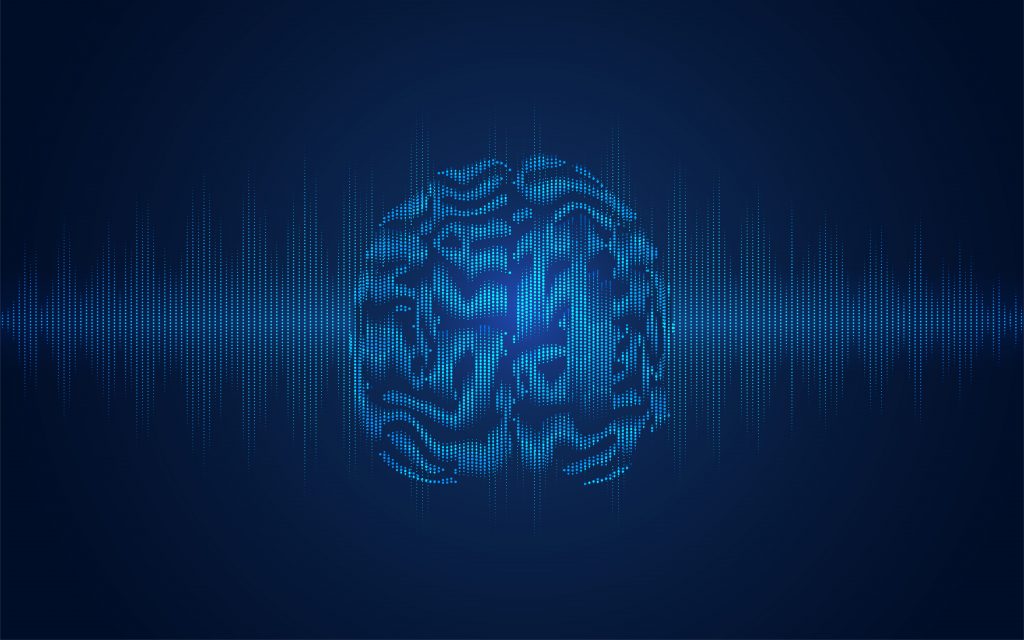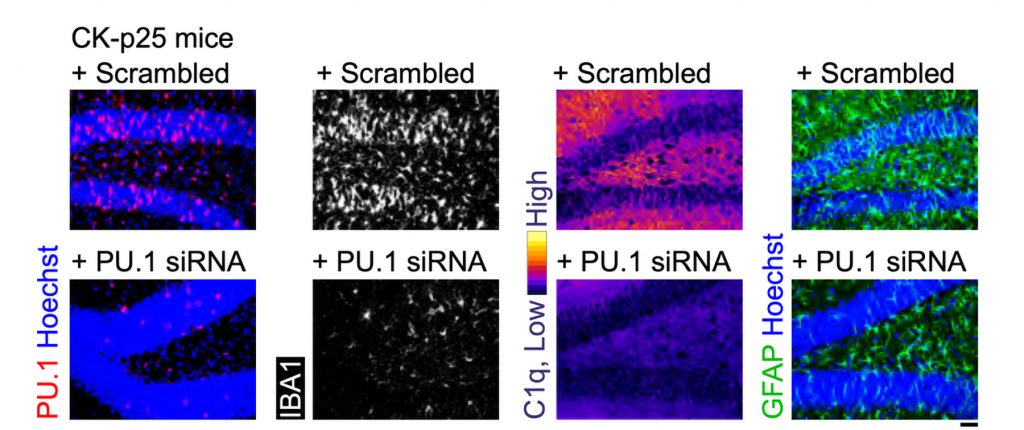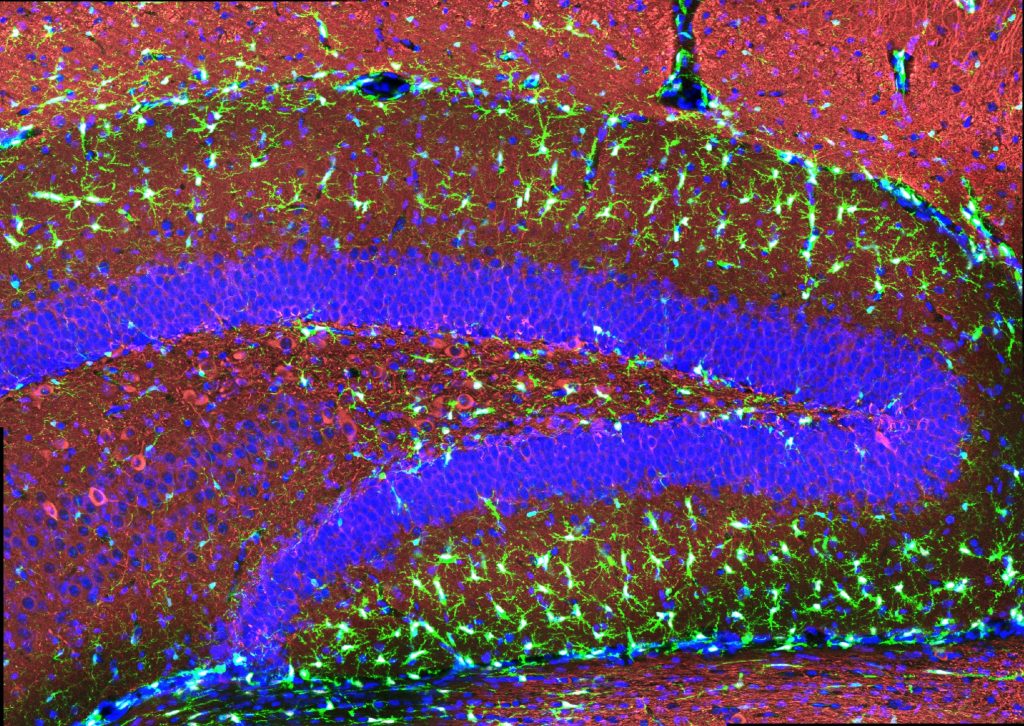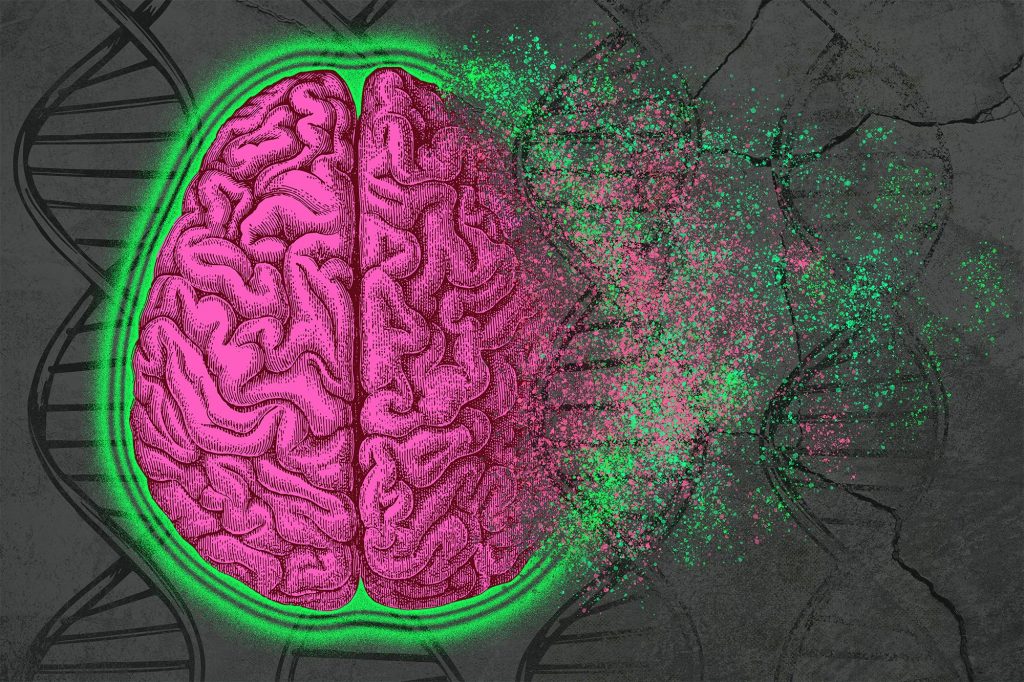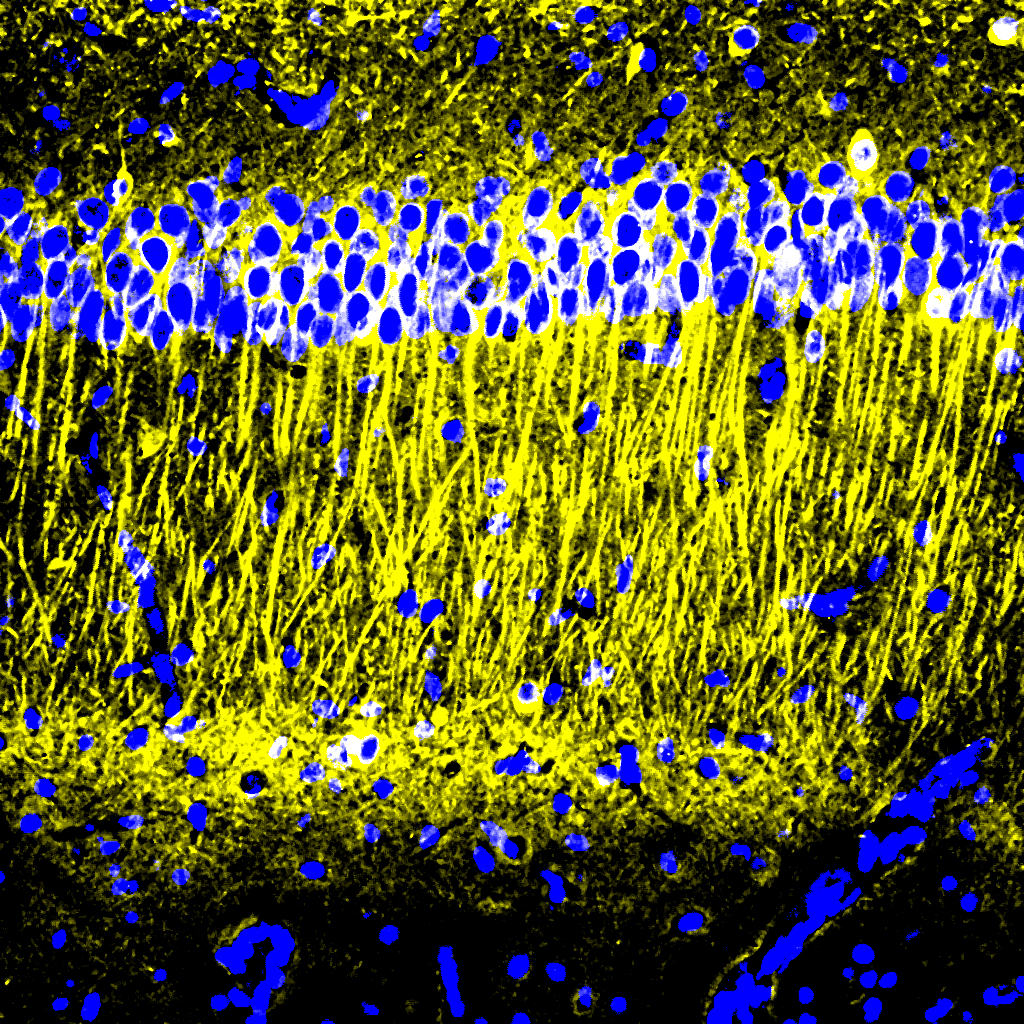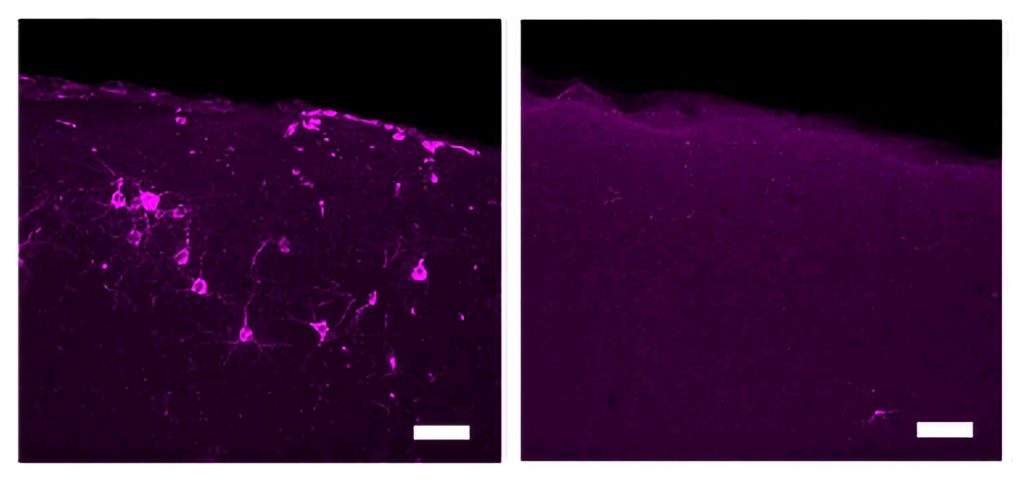MIT scientists report that gamma frequency light and sound stimulation preserves myelination in mouse models and reveal molecular mechanisms that may underlie the benefit. Early-stage trials in Alzheimer’s disease patients and studies in mouse models of the disease have suggested positive impacts on pathology and symptoms from exposure to light and sound presented at the “gamma” band …
